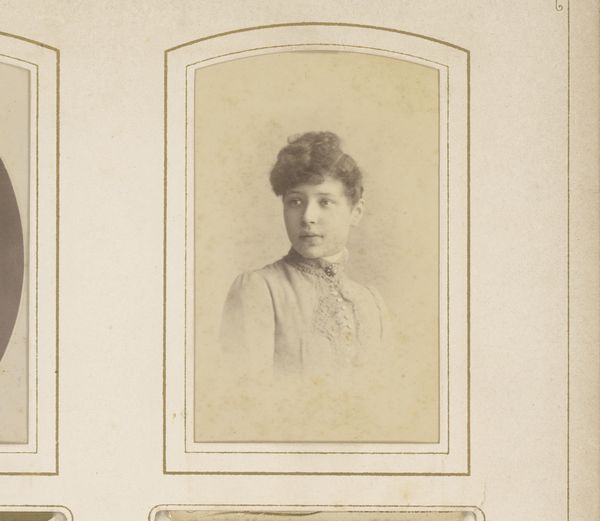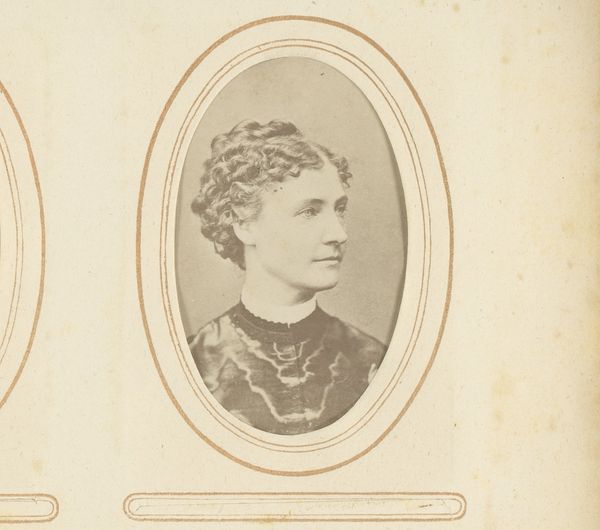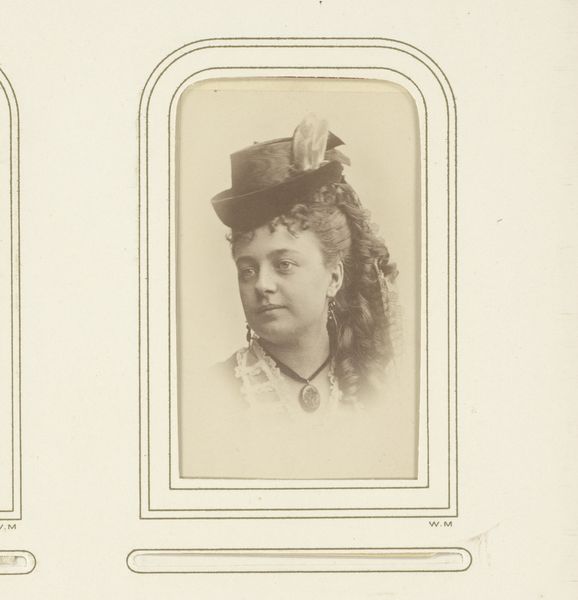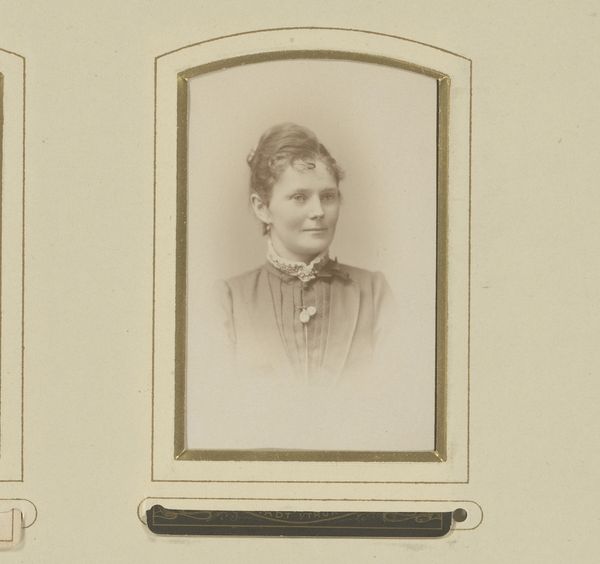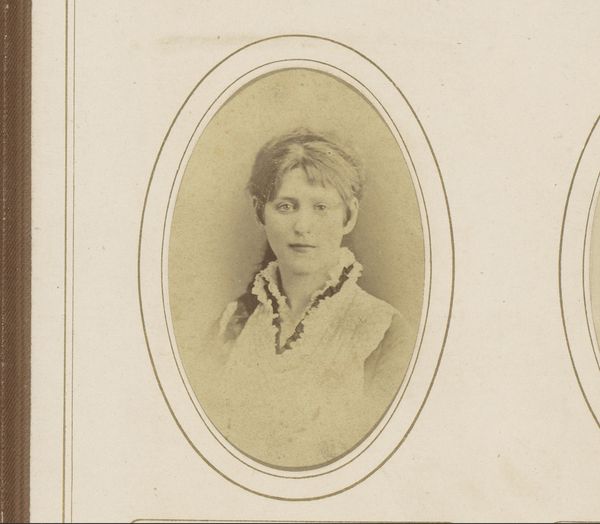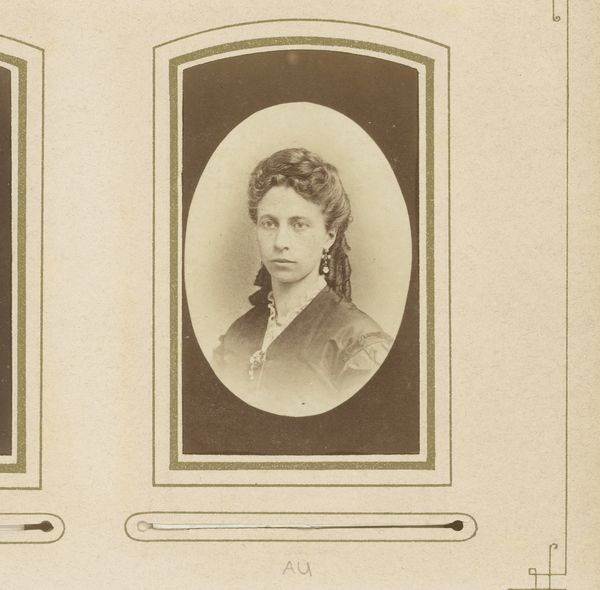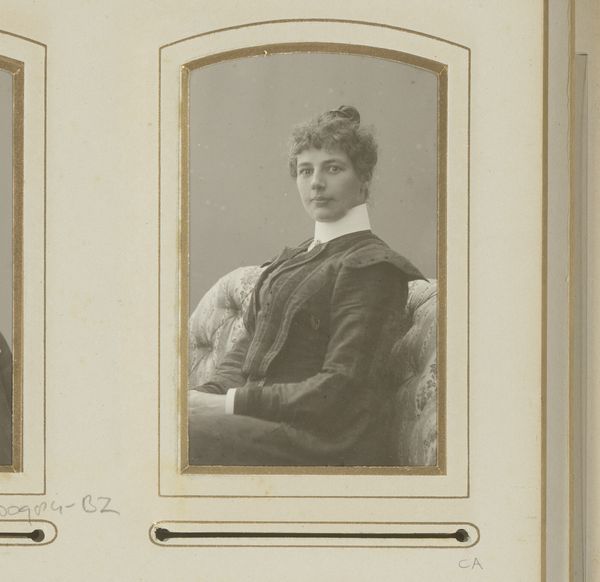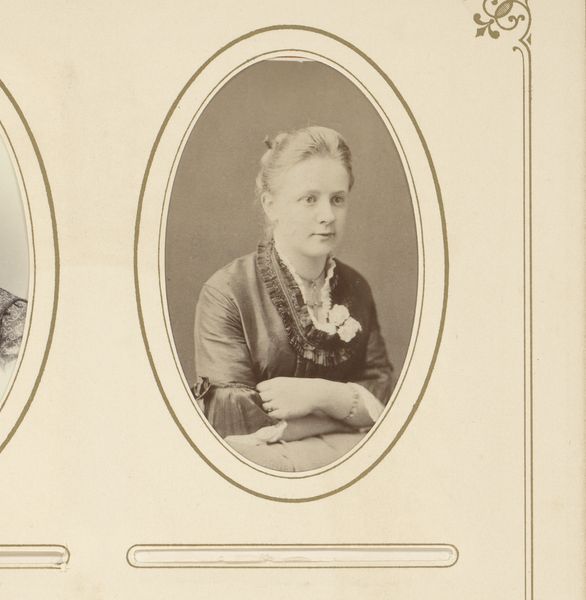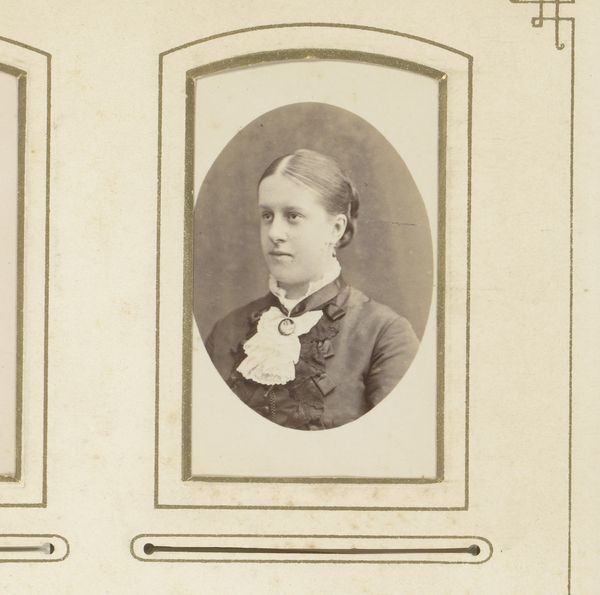
photography
#
portrait
#
photography
#
historical photography
#
academic-art
Dimensions: height 85 mm, width 51 mm
Copyright: Rijks Museum: Open Domain
Curator: Here we have a historical photograph entitled "Portret van Greta Dahlqvist," likely taken sometime between 1864 and 1880 by Gustaf Joop & Co. Editor: It's striking, isn't it? There's a stillness, a quiet gravity about the subject. The sepia tones contribute to that sense of faded elegance, I suppose. Curator: Yes, but what’s equally compelling is understanding the societal context. Photographic studios were becoming increasingly accessible to the middle class during this period, thus portraits like these were important tools for shaping and displaying identity and social status. Consider the implications for democratization of image-making. Editor: I am certainly intrigued by what's revealed in the interplay of light and shadow on her face and the very tight framing, drawing your eye to her gaze. Do you find there is any psychological depth evoked despite the photographic limitations of that era? Curator: Indeed. Think about the labor involved. Each of those portraits needed chemical expertise, skilled labor for developing, and specialized paper. Also, studio locations were strategic, situated in busy areas to promote access, but this was also essential for maximizing profits within the burgeoning photography industry. Editor: All valid observations. From a formalist point of view, I am also considering how this portrait adheres to specific academic-art conventions, which were then in vogue. Her composed expression, posture, costume… these were elements aimed to convey her dignity, beauty, refinement. Curator: Those material considerations are actually essential! It pushes back against our tendency to simply view this photograph as solely an aesthetic piece and urges a focus on what photography did as labor and industry during that time. Editor: Perhaps. But doesn’t art also prompt one to reflect on the enduring capacity of the human gaze to connect across the decades? And the ways formal elements like line, composition, and even limited color palettes can guide an individual interpretation? Curator: Yes, and to know that even the sitters’ apparent ‘natural’ features, the hairstyles and accessories, had been styled through various industries, too. The image's surface shows a much wider social reality than one could ever believe! Editor: Precisely. This detailed investigation, together with the contextual one, allows a fuller engagement with this work of art. Curator: It is clear the synthesis between close looking and the analysis of labor/materials brings so much insight into even the most austere work of photographic portraiture.
Comments
No comments
Be the first to comment and join the conversation on the ultimate creative platform.
